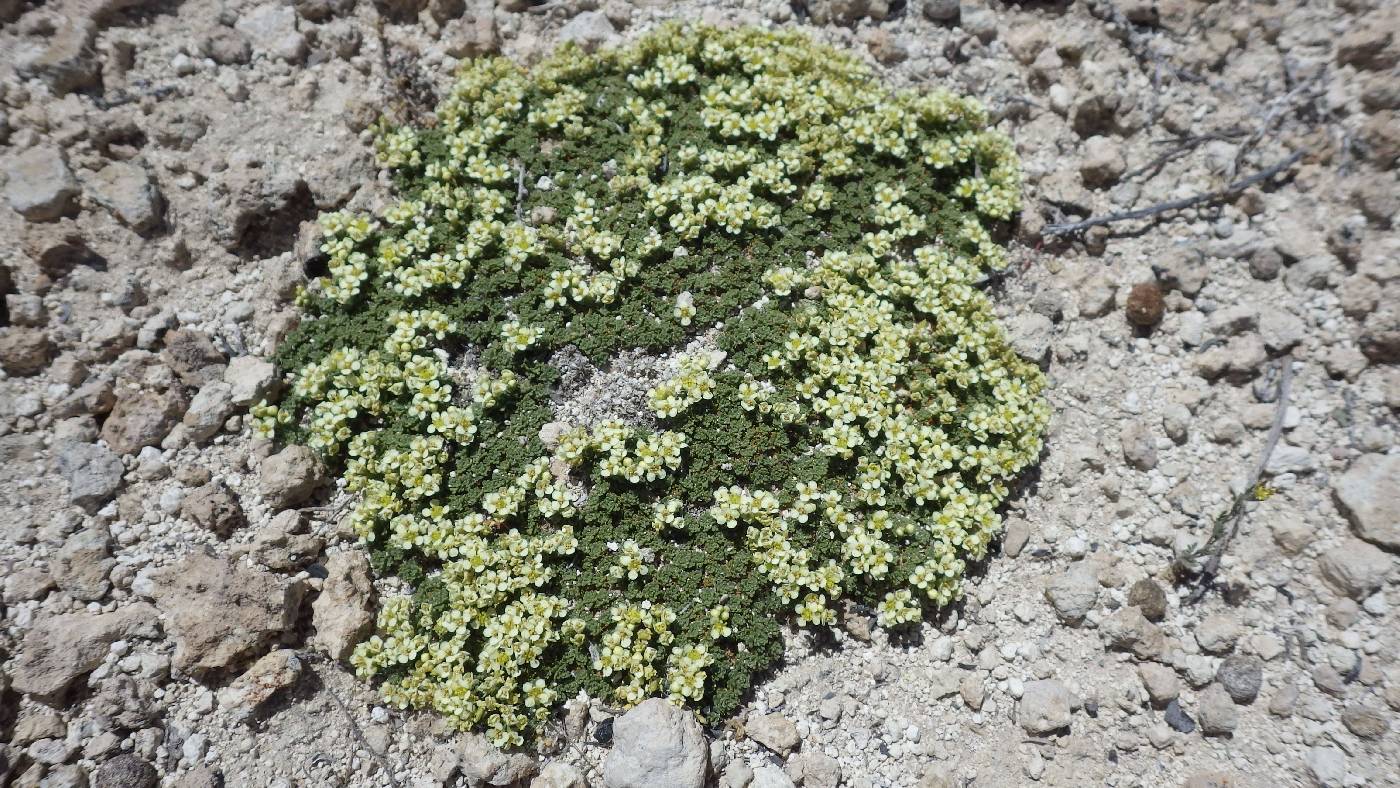|
Family: Brassicaceae |
Plants not scapose; glabrous, pubescent, hirsute, or pilose. Stems usually erect or ascending, sometimes procumbent, decumbent, or prostrate, unbranched or branched. Leaves usually basal and cauline (basal absent in L. fremontii); petiolate or sessile; basal rosulate or not, petiolate (or petiole undifferentiated from blade), blade margins entire, dentate, denticulate, serrate, crenate, or lobed; cauline petiolate or sessile, blade (base auriculate or not), margins entire, dentate, or pinnately divided. Racemes (usually corymbose), elongated or not in fruit. Fruiting pedicels erect to divaricate, slender or stout. Flowers: sepals (usually deciduous, sometimes persistent), usually ovate or oblong, rarely suborbicular; petals (erect or spreading, sometimes rudimentary or absent), obovate, spatulate, oblong, oblanceolate, orbicular, linear, or filiform, claw absent or differentiated from blade, (apex obtuse, rounded, or emarginate); stamens 2 or 4 and equal in length, lateral or median, or 6 and tetradynamous; filaments not dilated basally; anthers ovate or oblong; (ovary placentation apical); nectar glands (4 or 6), distinct, median glands often present. Fruits schizocarps or silicles, (rarely indehiscent), sessile, didymous, oblong, ovate, obovate, cordate, obcordate, elliptic, orbicular, ovoid, obovoid, or globose, strongly angustiseptate or inflated and terete; valves each with prominent veins or not veined, (keeled or rounded, apex winged or not, thin or strongly thickened and ornamented, enclosing or readily releasing seed), glabrous or pubescent; replum rounded, (visible); septum complete or perforated; style absent, obsolete, or distinct, (included or exserted from apical notch); stigma capitate, usually entire, rarely 2-lobed. Seeds oblong or ovate [obovate], plump or flattened, winged, margined, or not winged; seed coat (smooth, minutely reticulate, or papillate), usually copiously mucilaginous when wetted, rarely not; cotyledons usually incumbent (accumbent in L. virginicum) [diplecolobal]. Sep oblong to rotund; pet small, white (yellow), linear to spatulate, or often lacking; stamens 6, or by abortion 4 or 2; anthers small, oval; ovary flat; ovules 1 per locule, suspended; style short or none; stigma capitate; fr a silicle, flattened contrary to the narrow septum, thin or somewhat distended over the seeds, ovate to orbicular or obovate, often winged, commonly retuse, tipped by the persistent style or stigma; herbs with linear to elliptic, entire to pinnatifid lvs. 175, cosmop. Gleason, Henry A. & Cronquist, Arthur J. 1991. Manual of vascular plants of northeastern United States and adjacent Canada. lxxv + 910 pp. ©The New York Botanical Garden. All rights reserved. Used by permission. |


